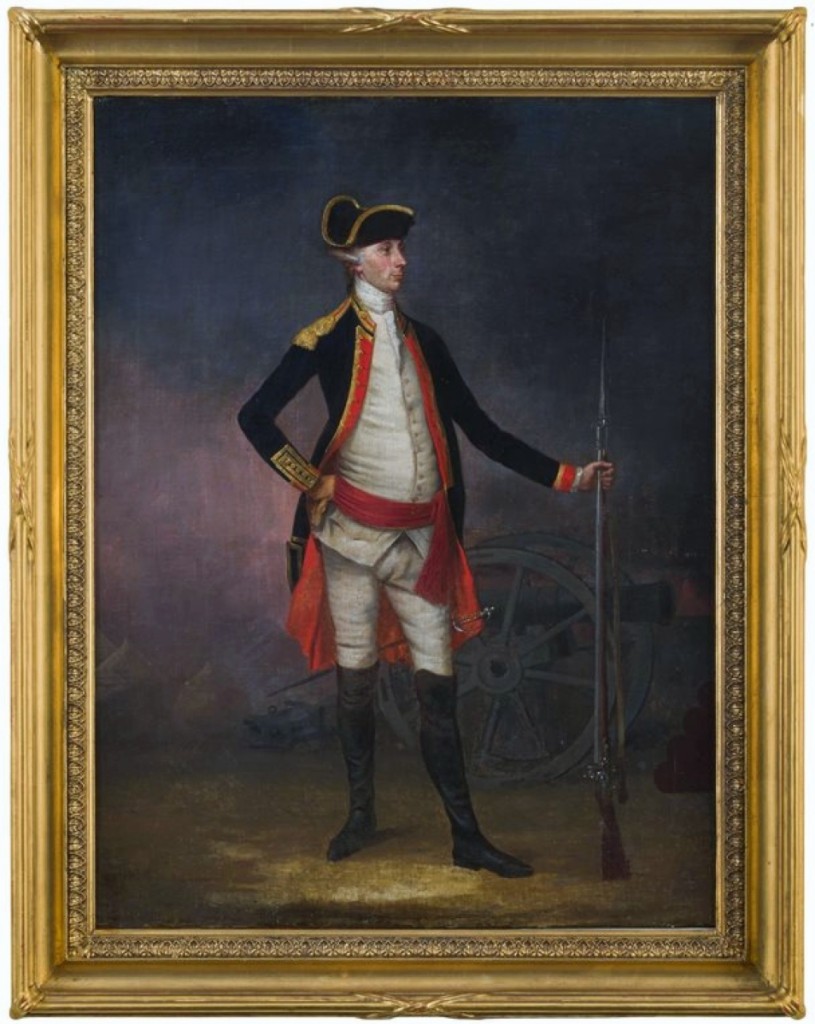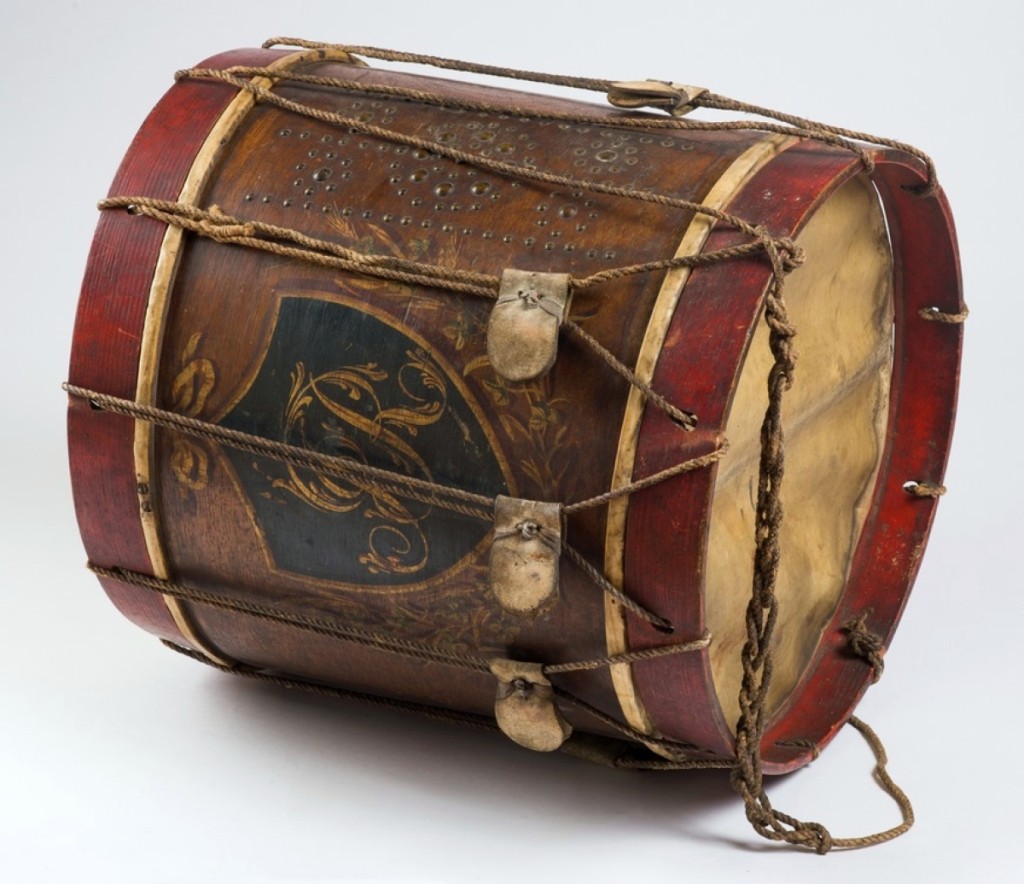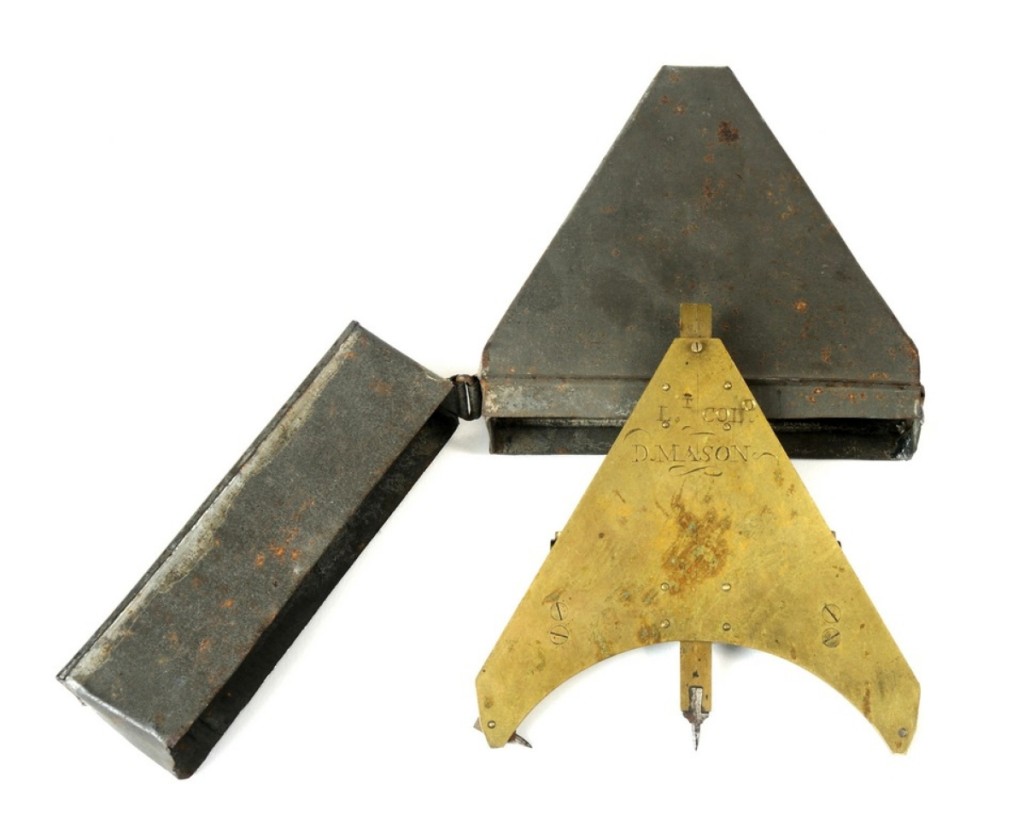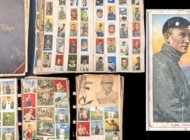
This newly discovered William Williams portrait of a colonial artillery officer was the sale’s top lot at $66,000. It was perhaps also the most notable of the deaccessioned pieces in the sale, painted in 1772 by Williams — a discovery made by Kochan during the process of researching the work in preparation for the sale.
Review and Onsite Photos by W.A. Demers, Additional Photos Courtesy of Nadeau Auction Gallery
EAST WINDSOR, CONN. – It’s a long drive from Nadeau’s Auction Gallery in East Windsor, Conn., to his home in Wiscasset, Maine – four hours – and James L, Kochan said he initially felt a little dispirited heading home following his inaugural Mars & Neptune Trust sale at the gallery on October 19. There had been an ample number of passed lots in what had been characterized as sale rife with rare military and naval arms, and other lots at times struggled to rise to the bottom of their estimates. But then for Kochan the planets realigned.
“During the long drive home, I had time to sort things out a little, and the reality is that the 181 lots offered still realized more than $500,000, despite the very fine passed lots – most of which were unreserved and, frankly, were no-brainers to bid on, had anyone with acumen been watching – so I am actually glad that those that passed did, as the trust can offer them later at realistic fixed prices or in our next sale.”
That assessment was bolstered by a call he received while driving home. It was the consignor of two Civil War-era cannons that failed to meet their reserves – two of only 17 reserved lots in the sale. “He complimented our catalog and advertising, and said that he was very happy with what we attempted to do for him, but was glad that both pieces were unsold, rather than selling at the bottom of the estimates, for that ‘would have killed’ him, as they were both worth far more.
“All of the other consignors, especially the three museums, told me they were delighted with the results we were able to achieve for them, so that cheered me up quite a bit.”
Kochan was a full-time antiques and fine art dealer for more than two decades. His CV also reflects nearly two decades as a museum director and curator, principally with the US Army Museum System and the National Park Service, including seven years as supervisory curator at Morristown National Historical Park. Before setting up his own fine art and antiques business in 1998, he was director of museum collections at Mount Vernon. He has authored several books and is considered a leading expert on American and British uniforms, accoutrements, martial arms and related military and maritime artwork and artifacts spanning the Eighteenth and Nineteenth Centuries.

Earning $27,000 was a Continental Army-altered, French M1717 rampart musket with bayonet with an overall length of 63¼ inches. Catalog notes state that it is the only example of an intact, American-altered, M1717 rampart musket configured for infantry use currently known to survive.
The inaugural Mars & Neptune Trust sale at Nadeau’s – so-named after Mars, the god of war, and Neptune, the god of the sea – was undertaken to pursue Kochan’s return to the nonprofit sector as president and chief executive officer of the trust, a 501(c)(3) he founded that aims to raise funds and public/private support for the preservation of endangered or rare surviving sites or artifacts relating to the military and naval history of America prior to 1850.
Although many lots sold well below the bottom of the estimate, others achieved strong returns and some new records were achieved.
A strong result was posted for a newly discovered William Williams portrait of a colonial artillery officer. It was the sale’s top lot at $66,000. It was also perhaps the most notable of the deaccessioned pieces in the sale, painted in 1772 by Williams – a discovery made by Kochan during the process of researching the work in preparation for the sale. One of only two known portraits of colonial officers by Williams (1727-1791), this painting was hiding in plain sight in an exhibition gallery of the Fort Ligonier Museum for the past 45 years. Catalog notes say it had been donated to the museum as an Allan Ramsay portrait of Arthur St Clair, executed prior to his departure from Scotland to America as a young subaltern in the 60th Foot or Royal Americans, with even a spurious version of the artist’s and sitter’s names painted to the upper right background of the portrait – something often found in actual Ramsay portraits from the 1750s. Not trusting the purported identity of the sitter, artist attribution and details of the uniform, Kochan in 2007 penned a letter to the museum’s director documenting the dress to be that of a Royal Artillery officer (a corps in which St Clair never served) and also to a postwar window of 1768-70, based on specific details of the uniform and equipage depicted. Thus, falling outside the museum’s scope of collections, the portrait was eventually deaccessioned and consigned to this sale.
Another potentially strong lot in the sale – the gold-headed “walking stick” of Founding Father John Hancock – failed to ignite bidding interest when it crossed the block as the 182nd and final item. Kochan, who believes that the cane “vies with General George Washington’s battle sword as an iconic artifact of the American Revolution, said he was truly baffled that the piece of Revolutionary- era Americana with impeccable provenance failed to get any serious bids at its $50/100,000 estimate. “I truly thought my estimate on that was ridiculously low and fully expected it to achieve in the low- to mid-six figures.”
Another misalignment of the planets occurred when one of the featured lots in the sale – a silver-hilt smallsword by Boston silversmith Jabob Hurd (1702-1758) and carried by General William Henry Harrison (1773-1841) – was seized by Windsor police in an ownership dispute, which is fully described in a November 9 article by Steven Goode in the Hartford Courant . Kochan and Nadeau’s had expected the relic weapon that was carried in 1811 by the future US president at the Battle of Tippecanoe to reach $30/50,000, according to the cataloging, which also listed the late Eric Martin Wunsch in its provenance.

A rare example of a French & Indian War period military drum, this mid-Eighteenth Century British regimental rope-tension snare drum beat a path to $10,160. Peeking through a hole in the drum’s side, you could see a printed trade label viewable inside the shell.
Catalog notes describe the small sword as silver and steel, 34½ inches long with Harrison’s name and successive owners’ names of the Symmes family engraved on hilt and scabbard mountings. Minutes before the sword, Lot 54, was to be gaveled, Windsor police arrived at Nadeau’s, responding to a complaint by an official of the Ohio-based Harrison-Symmes Memorial Foundation, a historical preservation group, saying that this was the sword stolen years ago from the Cincinnati Historical Society. “The last thing I wanted to do at our first auction was to be hauled out in cuffs,” Kochan told the Hartford Courant about his reluctant acquiescence to the item’s seizure. According to the Hartford Courant article, Windsor police held the sword until they received a valid court order from Ohio to turn it over.
Kochan maintains that he has proof of ownership, that the Windsor police illegally confiscated the sword and that he is confident it will be proven that the sword described by the Ohio injunction does not match his sword. So this will be a continued dispute between Kochan and the Ohio courts, where the matter now goes.
Such disappointments and drama aside, there were a number of good performers in the overall sale.
Included was a bronze swivel cannon captured from the US frigate President in 1815 that received much presale interest and sold for $22,500. There were important manuscripts and rare imprints relating to military and naval history. A rare manuscript copy of William Congreve’s (1742-1814) 1778 exercise for the light 6-pounder gun realized $20,400.
Portraits and historical paintings by leading Eighteenth and early Nineteenth Century American, British and French artists were well represented. Mather Brown’s (American British, 1761-1831) lively oil on canvas of “Smugglers Pushing Off Their Boat,” circa 1805, sailed to $30,000. Brown, descended from Reverend Increase Mather on his mother’s side, was a portrait and historical painter, born in Boston, Mass., but active in England. He was initially taught by his aunt and around 1773 became a pupil of Gilbert Stuart, according to catalog notes. He went to London in 1781 to further his training under Benjamin West and entered the Royal Academy schools in 1782.

A final price of $18,000 was posted for this unusual piece of militaria. Not unlike a surveyor’s tool, the gunner’s perpendicular — this particular one traced to Lieutenant Colonel David Mason, circa 1776 — enabled a gunner to establish the center line of an artillery piece and thus its direction of fire.
Two portraits offered in the sale were from Kochan’s own collection. Henry Edridge’s (1769-1821) “Colonel Coote Manningham of the Rifle Brigade, 1808 [and] Lieutenant Colonel Boyd Manningham of the 81st Foot,” were executed in graphite and watercolor wash on paper, with touches of body color, and went out at $15,240. Coote and Boyd Manningham were career British Army officers who both distinguished themselves in combat at the head of light infantry troops while serving in General Charles “No Flint” Grey’s Expedition to the West Indies in 1793-95.
Fetching $12,200 was a 38½-inch-long presentation-grade sword of French manufacture, circa 1810-30 that the sale’s curator James Kochan described as something of an enigma. “It bears no inscription or any national or even service-related emblems,” he wrote in the catalog. “However, the motifs found on both hilt and blade are strictly martial in nature, so it is doubtful that this sword could be a diplomatic piece; if not presented as some high token of esteem or for an act of valor, it might be a sword that a high-ranking officer might acquire for court appearances and other ceremonies.”
Kochan, whose enthusiasm and deep knowledge about this material was clearly evident at preview as he described some of the key lots that were going to be offered, added, “I’ve learned a lot from this first sale, though, and it will be applied in our next sale. We already have a plethora of stellar pieces, from both institutional and private collections, which we’ll be cataloging over the winter, so expect to see another sale with more lots, but all of the caliber of our inaugural sale or better.”
Prices given include the buyer’s premium as stated by the auction house. For information, www.nadeausauction.com or 860-246-2444.


















